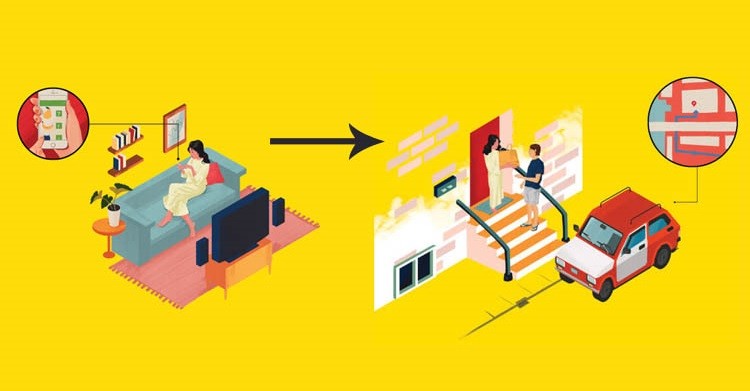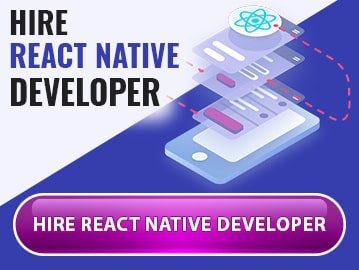A Comprehensive Guide to Developing an On-Demand App
Written by Hemendra Singh on September 06, 2018 | Updated on: September 6, 2018

Welcome to the world where there are fewer hurdles for every task you perform. Have you ever given it a thought that how we got introduced to some devices which were used to communicate only? In just a decade, with those devices, we can do anything we want. There are thousands of in this world. You can say that each day, a new technology enters the market.
There are almost 70% of people in the GA who are aware of the internet of things. There are almost 80% smartphone users who are knowingly or unknowingly using artificial intelligence. Technology like software development, mobile app development, web app development, etc. is spreading in all industries like healthcare, corporate, IT, sports, entertainment, fashion, food, travel, etc.
In mobile app development companies, resources are working hard in delivering every possible feature to the end users with the help of these technologies.
Table of Contents
The market for app development companies
According to a report developed by New Zoo, the mobile app market is expected to gross $80.6 billion in the year 2020. There is much scope in the mobile app development market as social media apps, gaming apps, on-demand apps are all showing a great future.
Mobile apps have some features like quick adoption and integration of advanced technologies for the end users and hence, are so popular. Many companies build apps for their employees and internal works. Most of the brands build mobile apps for their customers and end users.
If you want to tune your guitar, you have an app also to order food, you have an app. If you want to turn off the air conditioner of your bedroom and you are in office, there is an app that will help you with the internet of things solutions.
There were 2.8 million mobile apps in the play store for Android in the year 2017. According to Statista, there are 3.6 million mobile apps in the play store for Android in the year 2018. It is such a huge increase!
There were 2.2 million iOS apps in the App store of Apple in the year 2017. The number remains almost the same this year too. The primary reason behind this high pace rise in many Android apps is that Android does not have strict rules and policies to develop apps as compared to Apple.
Mobile App Stats
What is an on-demand app?
Apps that fulfill the customers’ demands by facilitating them with goods and services in the real-time. The on-demand economy has bought a dynamic change in the process of supply chain and how people interact with the technologies.
Satisfying customers’ demand in lesser time and with high-quality services has become a necessity for the businesses operating online.
The main motto of developing apps is to decrease the hurdle of users. There may be many problems in our lives every day that we don’t even realize needs a fix solution. These apps are nothing but on-demand apps.
As the name suggests, on-demand apps are something that fetches the command of end users and delivers the demanded service or product at the doorstep.
On-demand service apps are mediators between service providers and consumers. These apps have the facility of instant online payment, and the total fee includes some amount of delivery charges too. These charges are required since the delivery executives add to the cost.
Users prefer spending a small amount of fee to get faster delivery at the doorstep and reduce the hurdle of visiting the place personally. Maximum users of on-demand apps are millennials. As they say, technology is making people lazier than before, and increasing demand for on-demand service apps is a proof of it.
Daily life examples of on-demand solutions
Imagine you are a freelance content writer and working on an important project. However, you also need to attend a party in the evening and your favorite saloon is too far from your place. Plus it has a long waiting line.
What will you do? Will you go to the party without the hair done correctly and without proper makeup? No need for that. Just order a hairstylist, makeup artist at your home!
Let us take another example. You have spent 9 hours in your office and 3 hours traveling, after a hectic day, will you be able to cook for yourself? No worries! Just order your favorite food from any dispatch track app and pay online for it and the fresh food will be at your home in less than an hour!
On-Demand App Market Trends
From mobile app startup businesses to enterprises, everyone is working towards making the high-performance on-demand apps that will boost further the on-demand economy.
Furthermore, with the efficient and prominent on-demand healthcare apps, the old groups are exploring the new trend in the technologies and are becoming part of the industries target area along with the millennial generation.
On-Demand App Stats
Benefits of on-demand apps for businesses:
On-demand apps = greater investors’ interest
Business Benefits
- Leverage potential of smartphones
- Security and scalability
- Increased customer satisfaction
- Increased employee satisfaction
- The strong connection between consumers and service providers
- Cost efficient
- Branding
- Direct connection
- Increased conversion rate
- Increased return on investment (ROI)
Benefits of on-demand apps for customers:
Customer Benefits
- Time-saving
- Cost efficient
- Offers multiple options
- Easy online search options
- Easy online payment options
- Opportunity to connect directly with service providers
- Ability to offer reviews and ratings
- Social connectivity
- Consumers might get discount coupons and free gifts
What are the types of on-demand apps?
Food Delivery Apps
On-Demand Food Delivery
On-Demand food delivery apps are those where consumers can place food orders online after going through multiple restaurant options. Menu cards are made available for consumers to decide which item to order. Apart from this, order customization is also available. Once the order is placed, the delivery guy delivers it on time. In addition to this, the consumer can also contact the devilry executive directly through call option.
Grocery Delivery Apps
On-Demand Grocery Delivery
Dispatch track apps are incredibly efficient. Consumers can select multiple grocery items and order in bulk. He or she can decide what should be the quantity, brand, flavor, etc. Again a delivery executive delivers the items at the doorstep. There are multiple payment options available.
Beauty Services
On-Demand Beauty Services
These on-demand apps related to beauty sends beauticians at your given address. You can get ready at your home. There are multiple payment options available. The best part of these apps is that you need not wait for your turn.
Healthcare Services
On-Demand Healthcare Services
Rising investment in on-demand health services reflects an appetite for change. These apps are similar to the above apps. You can order medicines and doctors at your home. On-Demand Healthcare apps are best suited for those who are too ill and cannot manage by themselves.
Cabs Services
On-Demand Cab Services
We all know how hectic it is to get a cab on time. Technology is doing great with on-demand taxi app solutions. All you need to do is set a pickup location and a drop location. You get to see various options here such as micro cab, minicab, share a cab, etc. Select whatever suits you and enjoy the ride within a few minutes. The consumer needs to turn on location in a smartphone to access these apps effectively.
How to develop an on-demand app?
While developing an on-demand mobile app, follow these steps to build the excellent application.
1. Identify target audience:
In this first step, developers and research team must conduct research or survey to identify the target audience. The best way to find your target audience is first to find the most common problems faced by smartphone users.
Before Ola came in, cab drivers had great difficulty in finding passengers and vice versa. Think out of the box and find the pain point of the target audience.
2. Strategies:
Once you are aware of the problem of the target audience, you can start strategizing what exactly should be built. In this phase, developers can create a prototype on paper and create a clear image of exactly they are going to build.
3. Decide the players:
In the development of on-demand apps, there are various players involved such as consumer, service provider, delivery executive, customer support, etc.
On-Demand Players
4. Collaborate with third-party apps:
To develop a fantastic on-demand app, you must collaborate with third-party apps such as payment gateway apps, GPS, maps, social media apps. Payment gateway apps enable users to pay online in a single click that saves their time and efforts.
If you are developing a location-based on-demand app, syncing maps and GPS system is a must. Without these, an app cannot function.
In service based on-demand apps too, maps and GPS is necessary for the executive to deliver correctly.
Now why collaborate with social media? As we all know, social media is an excellent platform for SMS Marketing and branding purposes. Integrating your app with Facebook, Instagram, Twitter, etc. will help consumers share their experience on their accounts and ultimately increase the awareness of brands.
5. Offer real-time tracking:
Consumers, as well as app development companies, must be able to track the order in real time. Usually, very cool animations are used in real time tracking to make it more fun to use. With this feature, the consumer can contact the executive or customer support if the track shows a long pause.
6. Push notifications:
Consumers will not hold the phone in hand until they receive the order! To update them, push notifications are sent. For example, in location-based on-demand apps such as Uber, the user gets notified if the cab is late due to traffic or when cab reaches the pickup point.
In food ordering apps, the user gets the notifications when the restaurants accept the order, when the order is dispatched, when a delivery guy reaches near your given location, etc. Push notifications also play an essential role in informing about new arrivals, discounts, offers, etc.
7. Favorites:
This is nothing but storing consumer’s order history. This data is analyzed, and personalization is offered. Personalization is nothing but displaying favorites while the consumer is surfing on the internet. Also, the consumer can order directly from the list of favorites.
8. Reviews and ratings:
Consumers can put their thoughts on the service offered by giving ratings and writing reviews. These reviews are analyzed and used in the betterment of service. It increases consumer loyalty.
9. Customer support:
Customer support is essential in every on-demand app as it resolves any problem faced by end users. If the consumer is unable to contact service provider or delivery executive, he or she can always reach out to customer support and get an answer to every problem.
Conclusion
On-demand apps are in demand and must be developed efficiently to stand firm in the growing competition. To develop an on-demand app, developers must fix a target audience, understand their pain point, get a solution on it, and must include real-time tracking, push notifications, reviews, customer support, etc.
My name is Hemendra Singh. I am Managing Director and co-founder of PuzzleInnovationz, a Mobile App Development Company. I am having a keen interest in the latest trends and technologies that are emerging in different domains. Being an entrepreneur in the field of IT sector, it becomes my responsibility to aid my audience with the knowledge of latest trends in the market.




![Oracle Database Advantages, Disadvantages and Features [Guide 2021]](../wp-content/uploads/2019/08/Oracle-Database-Advantages-Disadvantages-150x150.jpg)









